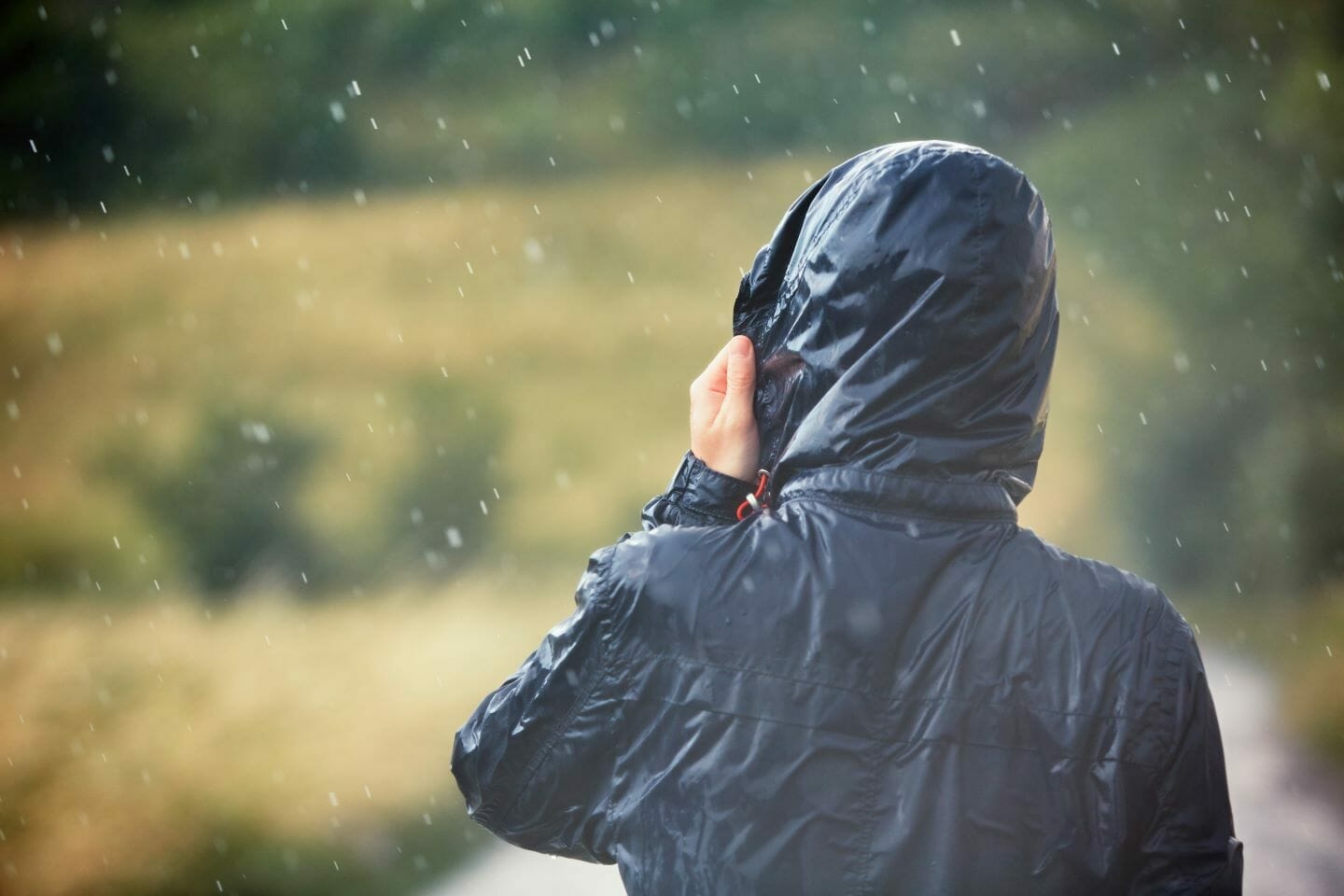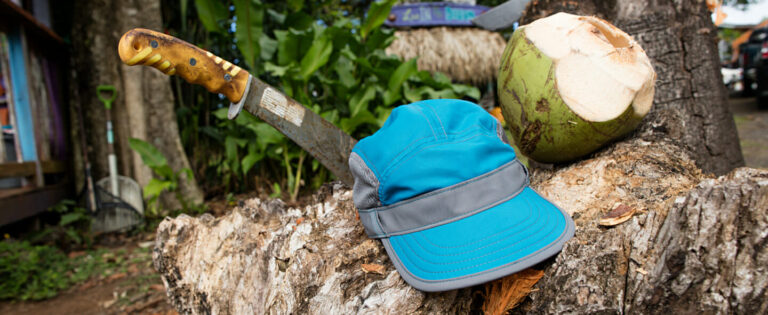
PU coatings… Anybody who’s ever perused the intricate details of the production of outdoor clothing has probably stumbled upon this term at some point.
But, have you ever asked yourself what the mysterious little abbreviation “PU” actually means? Or whether you actually need it? Could you do without it? Let’s find out!
Definition, properties and effect
Let’s begin by having a look in our trusty internet dictionary to see what polyurethane means. This will tell us that polyurethane – PU for short – denotes as a class of synthetic materials. This class of synthetic materials is in rigid foam, flexible foam, liquid form or casting resin. The famous industrial chemist called Otto Bayer discovered the polyaddition for the synthesis of polyurethanes in 1932.
In fact, however, polyurethane is probably far more familiar to us than one might think. Since the 1940s, PU has found its way into industry at an almost breakneck speed. In addition to its more abstract uses, such as thermal insulation in houses or refrigerators, it is also found in everyday things. Whether in pot sponges, in our backpack straps, in plasters, in our mattresses, in skis, in its liquid form it is found in paints, varnishes or even in our cosmetics. We find polyurethane everywhere.
Pretty useful stuff, right? But, what about all this talk about polyurethane coatings on apparel? Well, as the term already suggests, a “PU coating” is a protective film made of polyurethane. Simple, right? When used in its liquid form, polyurethane can be transformed into a permanent waterproof treatment. And this is precisely where things get interesting for us outdoorsy folk.
In order to provide textiles with an additional layer of protection, a thin film of liquid PU is applied to the garment. The PU coating has extremely strong water-repellent characteristics and is even capable of making fabrics completely waterproof! Such a film can be applied once or multiple times. One coat is appropriately called single-coated, whilst multiple coatings are referred to as multicoated. Depending on the area of use, manufacturers treat either the entire surface of the garment or just single fibres. Besides waterproofing the garment, PU coatings also make the fabric more robust and more resistant to tears, kinks and abrasion. These coatings also happen to be very flexible and durable. Plus, thanks to modern manufacturing processes, it’s now even possible to make breathable PU fabric! Magical, right?
The upsides and downsides of polyurethane coatings
Permanently waterproof
The advantages of a polyurethane coating cannot be denied. The most important advantage is the permanent impermeability it gives to the fabrics. Unlike a conventional impregnation or a DWR, a PU coating is resistant for a long time. However, not for eternity either! Even a PU coating will leak at some point. But we are talking about a very, very long period of time. As long as most of us will use a jacket or gloves. So that can be safely disregarded.
Quite heavy
A real disadvantage is definitely the weight of a PU coating. A polyurethane coating may be nothing more than one (or multiple) layer(s) of plastic, but it does have some weight to it. In fact, polyurethane-coated fabrics tend to be heavier than those treated with DWR. So, if an ultra-light garment is what you want, I’d steer clear of PU-coated apparel.
Bulky
A polyurethane coating also has a certain amount of volume to it, so a polyurethane-coated jacket would be somewhat bulkier than a “normal” outdoor jacket as well. True, that may just be an aesthetic disadvantage, but for me, PU-coated textiles look so much heavier than those with a DWR treatment. Personally, I’d prefer to wear something lighter and less bulky. But that’s just me!
Durable

On the plus side, polyurethane has protective properties. The additional plastic layer gives a fabric a decent degree of durability. Not least because of this, tent floors are very often equipped with a textile coating of polyurethane. The floors of tents are constantly exposed to heavy loads due to small pebbles on the ground, sand, roots, sticks and stones as well as natural friction from the person(s) resting on them. The PU coating provides the necessary abrasion resistance. Furthermore, a polyurethane coating is elastic and kink-resistant. The fabric does not lose its protection when it is crumpled or folded.
Breathable![]()
Polyurethane-coated textiles have had one major thing going against them: their lack of breathability. But we can breathe easily now that that’s no longer the case! Thanks to modern technology, PU-coated fabrics are highly breathable as well. One such modern technique is called a microporous coating. Basically, this is a PU coating that contains billions of tiny holes. These holes are so small that water vapour can escape to the outside, but moisture can’t get in. Voilà! Breathability! Fortunately, these coatings are not as expensive as you would think and are now widely used for outdoor textiles.
Environmental impact and uses
Of course, there’s a lot to be said for PU coatings in terms of environmental sustainability as well. A PU coating is clearly the environmentally friendlier alternative to many DWR treatments. Admittedly, polyurethane is by no means the environmental angel hovering over the outdoor industry. Quite on the contrary! When it comes to the production and the disposal of polyurethane, it can get pretty problematic. But in comparison to a fluorocarbon DWR, PU is as innocent as a lamb. Fluorocarbons (perfluorocarbons or PFCs) are very harmful to the environment and can be harmful to our health as well. That’s why so many outdoor clothing companies steer clear of them. When compared to PVC coated fabrics, which contain toxic plasticisers, PU definitely comes out ahead.
Areas of use

So, now that we know a bit more about polyurethane, the coatings themselves and the pros and cons of the polymer, we can move on to what a PU coated garment is best suited for. Nobody’s going to wear a heavy coated jacket for a trail run on a warm sunny day. Rainy and damp weather is where these garments are at their best.
Bad weather
As a general rule, we can say the PU-coated garments are best for “normal” bad weather. If the fabric and seams are nice and sealed, even the craftiest of raindrops won’t be able to penetrate your garment. Even though modern coating techniques have made it possible to manufacture breathable PU-coated fabrics, you shouldn’t wear them for highly aerobic activities in bad weather. Look for an alternative instead. Why? Well, for one thing, the breathable properties will never suffice for high-intensity physical activity. For another, the coated fabric will just weigh you down.
Durable clothing
For bad weather and when you need a particularly strong and abrasion-resistant garment, PU-coated fabrics are the way to go. Polyurethane-coated Cordura (a particularly strong polyamide fabric), for example, can withstand the sharpest of rock edges without any damage. Pretty neat, right?
Well, that’s about it for polyurethane-coated textiles. You’re all probably sick and tired of reading the word polyurethane, anyway! Still, I hope I was able to shed some light on the mysterious polymer that is PU!






18 Comments on the Article
Can it be washed?
Hello Kristy, yes PU coating is washable, normally not more than 30 degrees, and please don´t use fabric softener. Important is the reproofing after the washing. Kind regards, Marco
hi, please can you tell me what you mean by reproofing after washing? Thanks
Hey, I am looking to reproof my tent's rainfly. I was told to remove the old PU coating from the internal facing side and apply a new layer. Can you recommend a PU products to use for reproofing?
I have a linen jacket with a light PU coating. I'd like to get rid of the texture and stiffness of the coating. light machine wash? light machine dry? Plse email me at joan@joantucker.com Thanks very much
What does it mean that PU coating with 3 + degree waterproof
Hi, when you say reproofing after washing , can a pu coated jacket be reproofed? If so, how please.! I have a berghous I desperately want to revitalise!! Many thanks
Could I apply a new PU coating to an older rain jacket. For example. Montane Atomic DT. Where the inner lining has started to flake away? Would this work. As it's different to tent flysheets or groundsheets. This is a common problem with older Jackets. I'm assuming the breathability would be greatly reduced though. Obviously the old lining would have to be completely removed first. Many thanks.
I have old work flurestant waistcoat it still has works logo but I need to cover it,please could you advise me please,material of jacket states 100% polyester pu coated,thankyou.
Is there Latex in this product. As I'm extremely sensitive to it. And have had sevier allergic reaction. Thank you Tracy..